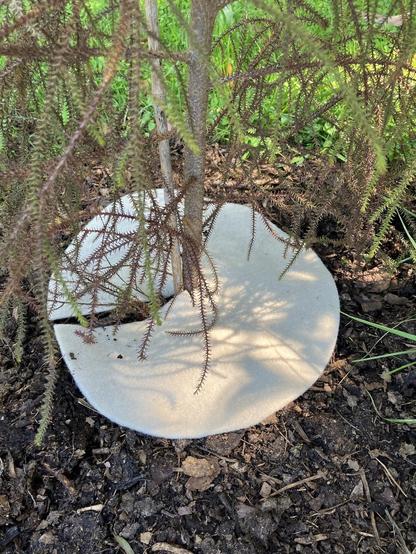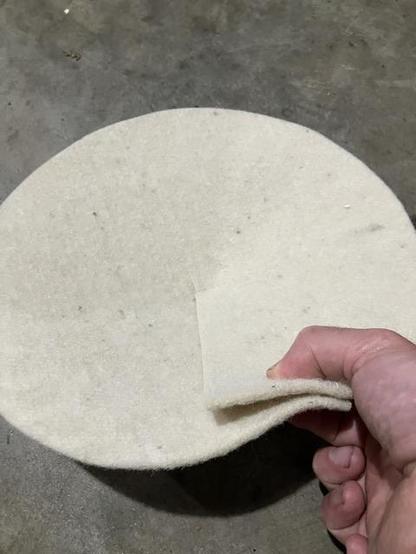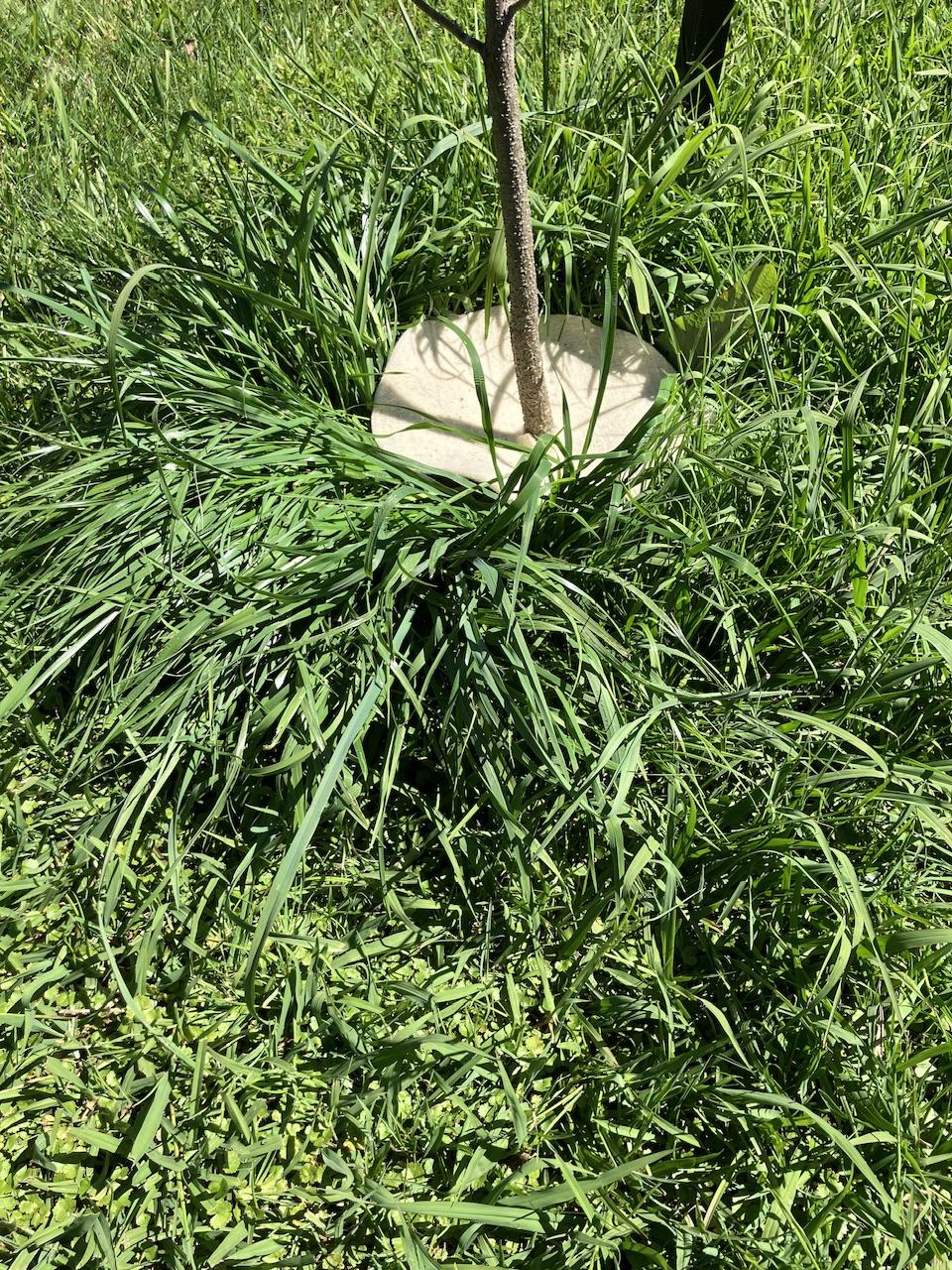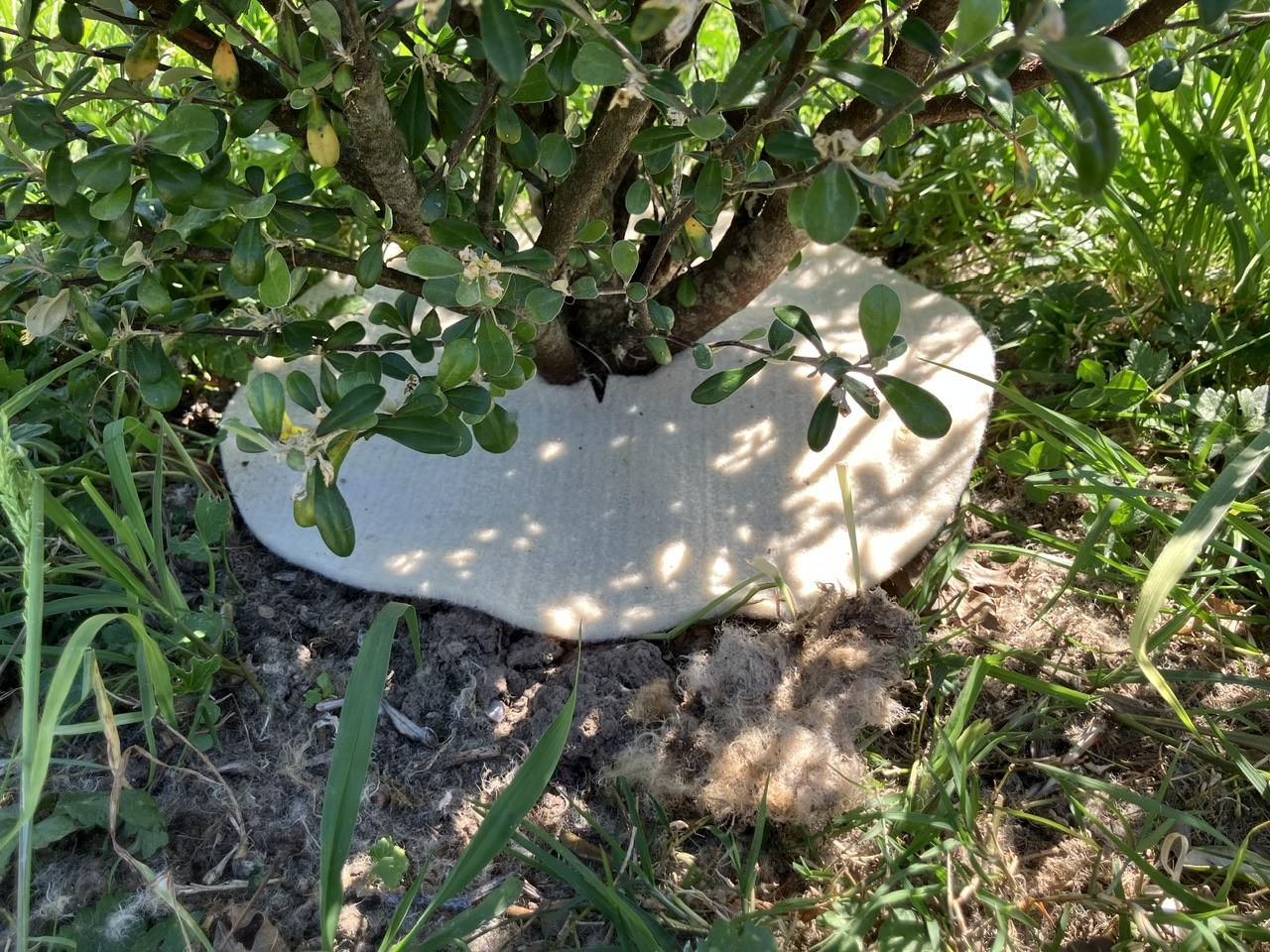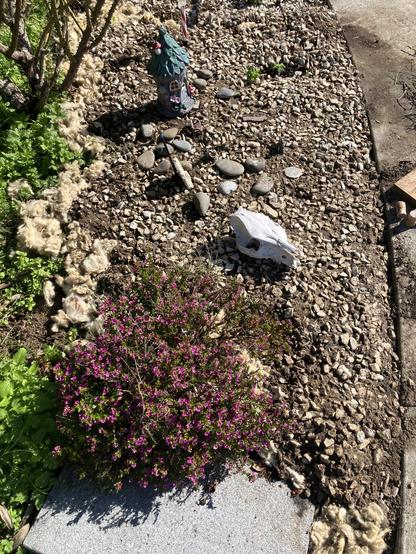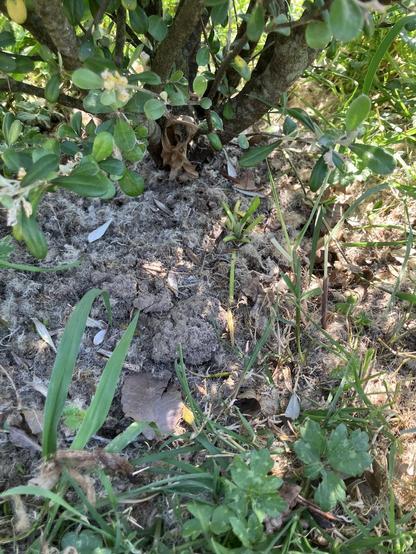They’ve arrived! The felted sheep dag wool mats are here.
These are the professionally made ones. Looks like they’re using a needle felter to make it, and then die cut the slot and center. Magic! I sniffed the box and confirmed that it’s genuine daggy sheep wool. Wow
I’ve installed a few. Put one on the kōwhai that’s been having perpetual problems with grass as it doesn’t shade the ground, a standalone Pittosporum (korakia or Gentii or something), and my little Rimu I which recently composted.


